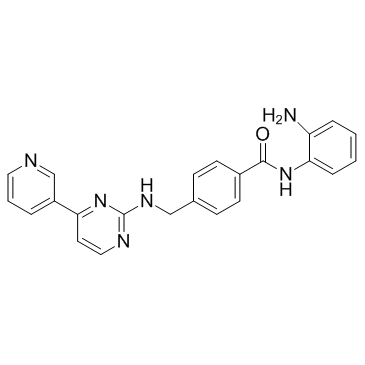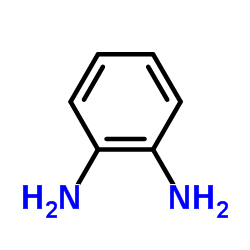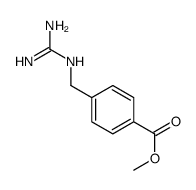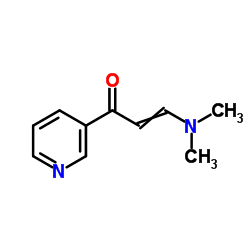Mocetinostat(MGCD0103)

Mocetinostat(MGCD0103) structure
|
Common Name | Mocetinostat(MGCD0103) | ||
|---|---|---|---|---|
| CAS Number | 726169-73-9 | Molecular Weight | 396.444 | |
| Density | 1.3±0.1 g/cm3 | Boiling Point | N/A | |
| Molecular Formula | C23H20N6O | Melting Point | N/A | |
| MSDS | N/A | Flash Point | N/A | |
Use of Mocetinostat(MGCD0103)Mocetinostat (MGCD0103) is a potent, orally active and isotype-selective HDAC (Class I/IV) inhibitor with IC50s of 0.15, 0.29, 1.66 and 0.59 μM for HDAC1, HDAC2, HDAC3 and HDAC11, respectively. Mocetinostat shows no inhibition on HDAC4, HDAC5, HDAC6, HDAC7, or HDAC8. |
| Name | N-(2-aminophenyl)-4-[[(4-pyridin-3-ylpyrimidin-2-yl)amino]methyl]benzamide |
|---|---|
| Synonym | More Synonyms |
| Description | Mocetinostat (MGCD0103) is a potent, orally active and isotype-selective HDAC (Class I/IV) inhibitor with IC50s of 0.15, 0.29, 1.66 and 0.59 μM for HDAC1, HDAC2, HDAC3 and HDAC11, respectively. Mocetinostat shows no inhibition on HDAC4, HDAC5, HDAC6, HDAC7, or HDAC8. |
|---|---|
| Related Catalog | |
| Target |
HDAC1:0.15 μM (IC50) HDAC2:0.29 μM (IC50) HDAC11:0.59 μM (IC50) HDAC3:1.66 μM (IC50) |
| In Vitro | Mocetinostat is a potent, orally active and isotype-selective HDAC (Class I/IV) inhibitor with IC50s of 0.15, 0.29, 1.66 and 0.59 μM for HDAC1, HDAC2, HDAC3 and HDAC11, respectively. Mocetinostat shows no inhibition on HDAC4, HDAC5, HDAC6, HDAC7, or HDAC8. Mocetinostat (MGCD0103) exhibits potent and selective antiproliferative activities against a broad spectrum of human cancer cell lines in vitro, and HDAC inhibitory activity is required for these effects. In all cell lines tested, Mocetinostat (MGCD0103) partially inhibits cellular HDAC enzyme activity although the maximal inhibition of activity varies among cell lines from 75% to 85% of total activity. The IC50 of Mocetinostat in intact cancer cells is independent of tissue origin. In A549 cells, MGCD0103 shows dose-dependent inhibition of HDAC activity in whole cells. At high concentrations in A549 cells, Mocetinostat inhibits a maximum of 80% of total activity. In HCT116 cells, Mocetinostat induces a significant S-phase depletion and both G1 and G2-M accumulation[1]. |
| In Vivo | Mocetinostat (MGCD0103) significantly inhibits growth of human tumor xenografts in nude mice in a dose-dependent manner and the antitumor activity correlated with induction of histone acetylation in tumors. The p.o. administration of Mocetinostat (MGCD0103) (2HBr salt) significantly reduces growth of implanted advanced A549 tumors in nude mice in a dose-dependent manner after 13 days of daily administration. Mocetinostat (170 mg/kg for 2HBr salt, corresponding to 120 mg/kg of free base) significantly blocks growth of tumors compared with vehicle treatment alone (P<0.05 in post-ANOVA Dunnett's test) with no change in body weight[1]. |
| Kinase Assay | The deacetylase enzyme assay is based on a homogeneous fluorescence release assay. Purified recombinant HDAC enzymes are incubated with Mocetinostat (MGCD0103) diluted in various concentrations for 10 min in assay buffer [25 mM HEPES (pH 8.0), 137 mM NaCl, 1 mM MgCl2, 2.7 mM KCl] at room temperature. The substrate Boc-Lys(ε-Ac)-AMC (Bachem) is added to the reaction for further incubation at 37°C. The concentration of the substrate and the incubation time varies for different isotypes of HDAC enzymes. A 20-min trypsin incubation at room temperature allows the release of the fluorophore from the deacetylated substrate. The fluorescent signal is detected by fluorometer at excitation of 360 nm, emission of 470 nm, and cutoff at 435 nm. The IC50 values of the compounds are determined by analyzing dose-response inhibition curves[1]. |
| Cell Assay | Cells in 96-well plates are incubated with Mocetinostat at various concentrations for 72 h at 37°C in 5% CO2. MTT is added at a final concentration of 0.5 mg/mL and incubated with the cells for 4 h before an equal volume of solubilization buffer [50% N,N-dimethylformamide, 20% SDS (pH 4.7)] is added. After overnight incubation, solubilized dye is quantified by reading at 570 nm using a reference at 630 nm. Absorbance values are converted to cell numbers according to a standard growth curve of the relevant cell line. The concentration which reduces cell numbers to 50% relative to DMSO-treated cells is determined as MTT IC50[1]. |
| Animal Admin | Mice[1] Female CD-1 nude mice, ages 8 to 10 wk are used. Tumor fragments (30 mg), which have been serially passaged thrice in vivo in minimal, are implanted s.c. through a small surgical incision on the flank of the mice while under general anesthesia. Mocetinostat is dissolved in vehicle (PBS acidified with 0.1 N HCl or PEG400/0.2 N HCl saline, 40:60) and dosed p.o. as solutions daily. Tumor volumes and body weight are monitored thrice weekly for at least 2 wk. Each experimental group containe six to eight animals. For pharmacokinetic study, blood is collected from animals at various time points, and plasma samples are analyzed using an Agilent 1100 HPLC system coupled with an MDS Sciex API2000 triple quadrupole mass spectrometer. Rats[2] Forty rats (220±20 g) are randomly divided into four different dosages of Mocetinostat groups (Low group, Medium group, High group, and control group with 10 rats in each group). Mocetinostat is dissolved in corn oil as suspension at three different concentrations (20, 40, and 80 mg/mL). Three different Mocetinostat groups (Low group, Medium group, and High group) are respectively given Mocetinostat 20, 40, and 80 mg/kg one time by intragastric administration at every morning and last for 7 days. Control group are given saline by same administration method. At 8 days morning, six probe drugs, Bupropion, Phenacetin, Tolbutamide, Metoprolol, Testosterone, and Omeprazole, are mixed in corn oil and given to the rats of three Mocetinostat groups and control group by intragastric administration at a single dosage of 10 mg/kg for Bupropion, Phenacetin, Metoprolol, Testosterone, and Omeprazole and 1 mg/kg for Tolbutamide. |
| References |
| Density | 1.3±0.1 g/cm3 |
|---|---|
| Molecular Formula | C23H20N6O |
| Molecular Weight | 396.444 |
| Exact Mass | 396.169861 |
| PSA | 105.82000 |
| LogP | 1.88 |
| Index of Refraction | 1.730 |
| Storage condition | -20°C |
| HS Code | 2933990090 |
|---|
|
~67% 
Mocetinostat(MG... CAS#:726169-73-9 |
| Literature: Zhou, Nancy; Moradei, Oscar; Raeppel, Stephane; Leit, Silvana; Frechette, Sylvie; Gaudette, Frederic; Paquin, Isabelle; Bernstein, Naomy; Bouchain, Giliane; Vaisburg, Arkadii; Jin, Zhiyun; Gillespie, Jeff; Wang, James; Fournel, Marielle; Yan, Pu T.; Trachy-Bourget, Marie-Claude; Kalita, Ann; Lu, Aihua; Rahil, Jubrail; MacLeod, A. Robert; Li, Zuomei; Besterman, Jeffrey M.; Delorme, Daniel Journal of Medicinal Chemistry, 2008 , vol. 51, # 14 p. 4072 - 4075 |
|
~% 
Mocetinostat(MG... CAS#:726169-73-9 |
| Literature: Journal of Medicinal Chemistry, , vol. 56, # 15 p. 6156 - 6174 |
|
~% 
Mocetinostat(MG... CAS#:726169-73-9 |
| Literature: Journal of Medicinal Chemistry, , vol. 56, # 15 p. 6156 - 6174 |
|
~% 
Mocetinostat(MG... CAS#:726169-73-9 |
| Literature: Journal of Medicinal Chemistry, , vol. 56, # 15 p. 6156 - 6174 |
| HS Code | 2933990090 |
|---|---|
| Summary | 2933990090. heterocyclic compounds with nitrogen hetero-atom(s) only. VAT:17.0%. Tax rebate rate:13.0%. . MFN tariff:6.5%. General tariff:20.0% |
| Mocetinostat |
| N-(2-Aminophenyl)-4-({[4-(3-pyridinyl)-2-pyrimidinyl]amino}methyl)benzamide |
| MGCD0103 |
| MGCD 0103 |
| Benzamide, N-(2-aminophenyl)-4-[[[4-(3-pyridinyl)-2-pyrimidinyl]amino]methyl]- |
| S1122_Selleck |
| N-(2-aminophenyl)-4-((4-pyridin-3-ylpyrimidin-2-ylamino)methyl)benzamide |
| N-(2-aminophenyl)-4-({[4-(pyridin-3-yl)pyrimidin-2-yl]amino}methyl)benzamide |
![4-({[4-(Pyridin-3-yl)pyrimidin-2-yl]amino}methyl)benzoic acid structure](https://image.chemsrc.com/caspic/274/849235-68-3.png)





